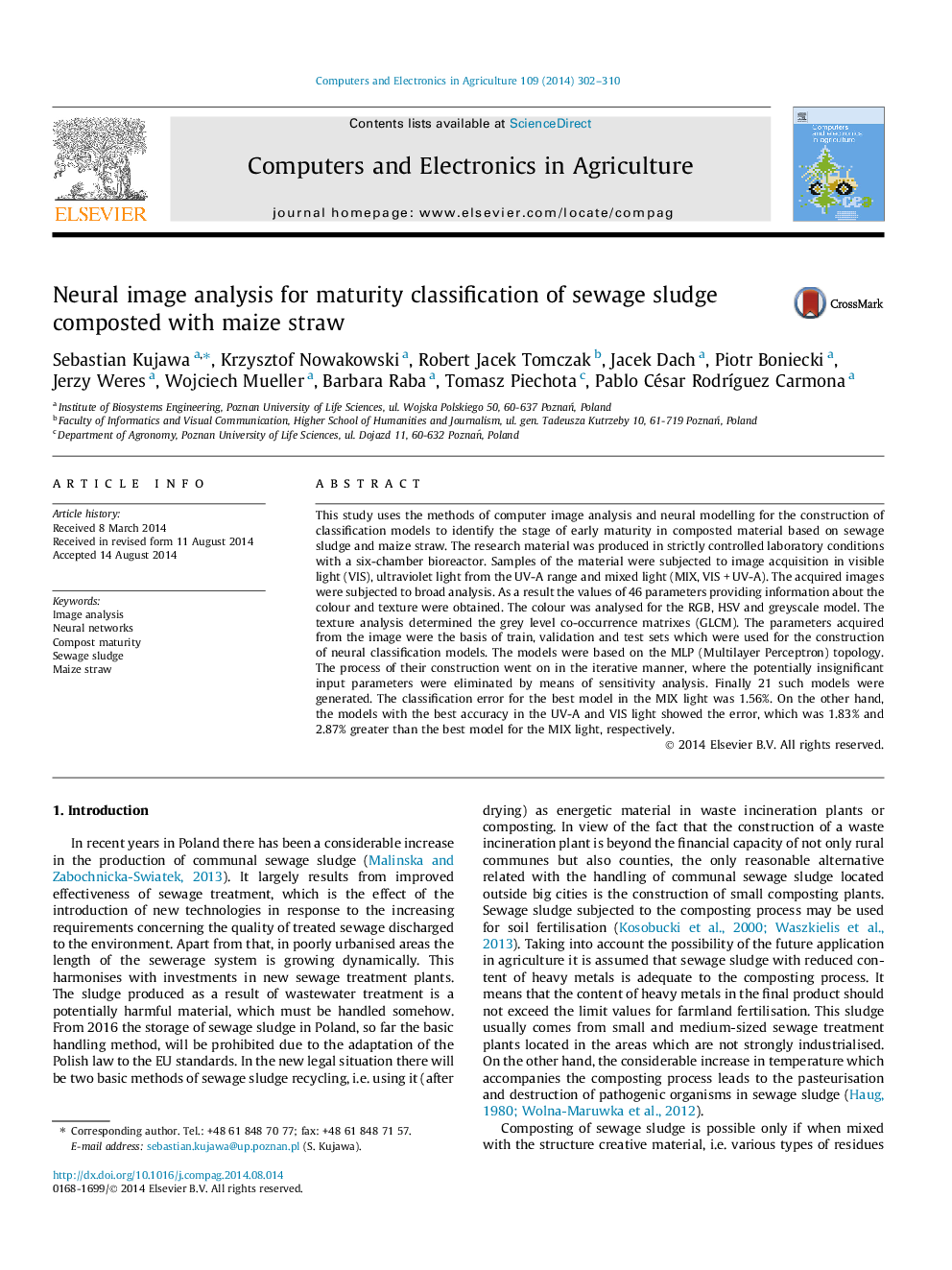| کد مقاله | کد نشریه | سال انتشار | مقاله انگلیسی | نسخه تمام متن |
|---|---|---|---|---|
| 84250 | 158870 | 2014 | 9 صفحه PDF | دانلود رایگان |
• Samples of sewage sludge composted with maize straw were obtained.
• Images of the composted material were acquired under the VIS, UV-A, and MIX light.
• Neural image analysis was used for maturity classification of the material.
• The best results of the classification were obtained for the MIX light.
This study uses the methods of computer image analysis and neural modelling for the construction of classification models to identify the stage of early maturity in composted material based on sewage sludge and maize straw. The research material was produced in strictly controlled laboratory conditions with a six-chamber bioreactor. Samples of the material were subjected to image acquisition in visible light (VIS), ultraviolet light from the UV-A range and mixed light (MIX, VIS + UV-A). The acquired images were subjected to broad analysis. As a result the values of 46 parameters providing information about the colour and texture were obtained. The colour was analysed for the RGB, HSV and greyscale model. The texture analysis determined the grey level co-occurrence matrixes (GLCM). The parameters acquired from the image were the basis of train, validation and test sets which were used for the construction of neural classification models. The models were based on the MLP (Multilayer Perceptron) topology. The process of their construction went on in the iterative manner, where the potentially insignificant input parameters were eliminated by means of sensitivity analysis. Finally 21 such models were generated. The classification error for the best model in the MIX light was 1.56%. On the other hand, the models with the best accuracy in the UV-A and VIS light showed the error, which was 1.83% and 2.87% greater than the best model for the MIX light, respectively.
Journal: Computers and Electronics in Agriculture - Volume 109, November 2014, Pages 302–310
